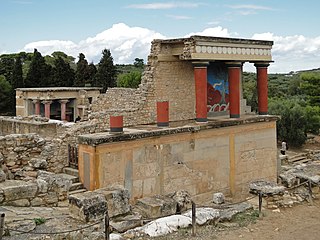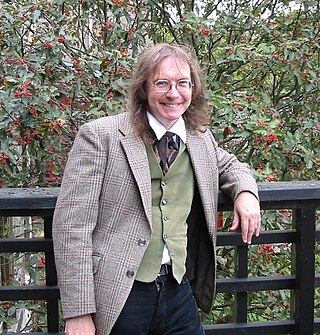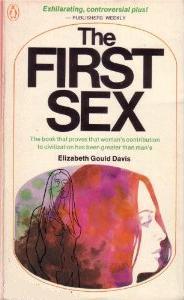
The Great Goddess hypothesis theorizes that, in Palaeolithic, Mesolithic, and/or Neolithic Europe and Western Asia and North Africa, a singular, monotheistic female deity was worshipped.

The Great Goddess hypothesis theorizes that, in Palaeolithic, Mesolithic, and/or Neolithic Europe and Western Asia and North Africa, a singular, monotheistic female deity was worshipped.

The theory had been first proposed by the German Classicist Eduard Gerhard in 1849, when he speculated that the various goddesses found in ancient Greek paganism had been representations of a singular goddess who had been worshipped far further back into prehistory. He associated this deity with the concept of Mother Earth, [1] which itself had only been developed in the 18th century by members of the Romanticist Movement. [2] Soon after, this theory began to be adopted by other classicists in France and Germany, such as Ernst Kroker, Fr. Lenormant and M.J. Menant, who further brought in the idea that the ancient peoples of Anatolia and Mesopotamia had influenced the Greek religion, and that therefore they also had once venerated a great goddess. [3] These ideas amongst various classicists echoed those of the Swiss judge J.J. Bachofen, who put forward the idea that the earliest human societies were matriarchal, but had converted to a patriarchal form in later prehistory. Commenting on this idea, the historian Ronald Hutton (1999) remarked that in the eyes of many at the time, it would have been an obvious conclusion that "what was true in a secular sphere should also, logically, have been so in the religious one." [3]
In 1901, the archaeologist Sir Arthur Evans—who in an 1895 work had dismissed the Great Goddess theory [4] —changed his mind and accepted the idea whilst excavating at Knossos on Crete, the site of the Bronze Age Minoan civilisation. After unearthing a number of female figurines, he came to believe that they all represented a singular goddess, who was the Minoan's chief deity, and that all the male figurines found on the site represented a subordinate male god who was both her son and consort, an idea that he based partially upon the later classical myth of Rhea and Zeus. [5] In later writings in ensuing decades he went on to associate these Neolithic and Bronze Age images with other goddesses around the Near East. As Hutton pointed out, "his influence made this the orthodoxy of Minoan archaeology, although there was always a few colleagues who pointed out that it placed a strain upon the evidence." [3]

The Horned God is one of the two primary deities found in Wicca and some related forms of Neopaganism. The term Horned God itself predates Wicca, and is an early 20th-century syncretic term for a horned or antlered anthropomorphic god partly based on historical horned deities.

Wicca, also known as "The Craft", is a modern pagan, syncretic, earth-centered religion. Considered a new religious movement by scholars of religion, the path evolved from Western esotericism, developed in England during the first half of the 20th century, and was introduced to the public in 1954 by Gerald Gardner, a retired British civil servant. Wicca draws upon ancient pagan and 20th-century hermetic motifs for theological and ritual purposes. Doreen Valiente joined Gardner in the 1950s, further building Wicca's liturgical tradition of beliefs, principles, and practices, disseminated through published books as well as secret written and oral teachings passed along to initiates.

The Minoan civilization was a Bronze Age culture which was centered on the island of Crete. Known for its monumental architecture and energetic art, it is often regarded as the first civilization in Europe. The ruins of the Minoan palaces at Knossos and Phaistos are popular tourist attractions.

Knossos is a Bronze Age archaeological site in Crete. The site was a major center of the Minoan civilization and is known for its association with the Greek myth of Theseus and the minotaur. It is located on the outskirts of Heraklion, and remains a popular tourist destination.
The White Goddess: a Historical Grammar of Poetic Myth is a book-length essay on the nature of poetic myth-making by the English writer Robert Graves. First published in 1948, the book is based on earlier articles published in Wales magazine; corrected, revised and enlarged editions appeared in 1948, 1952 and 1961. The White Goddess represents an approach to the study of mythology from a decidedly creative and idiosyncratic perspective. Graves proposes the existence of a European deity, the "White Goddess of Birth, Love and Death", much similar to the Mother Goddess, inspired and represented by the phases of the Moon, who lies behind the faces of the diverse goddesses of various European and pagan mythologies.

A mother goddess is a major goddess characterized as a mother or progenitor, either as an embodiment of motherhood and fertility or fulfilling the cosmological role of a creator- and/or destroyer-figure, typically associated the Earth, sky, and/or the life-giving bounties thereof in a maternal relation with humanity or other gods. When equated in this lattermost function with the earth or the natural world, such goddesses are sometimes referred to as the Mother Earth or Earth Mother, deity in various animistic or pantheistic religions. The earth goddess is archetypally the wife or feminine counterpart of the Sky Father or Father Heaven, particularly in theologies derived from the Proto-Indo-European sphere. In some polytheistic cultures, such as the Ancient Egyptian religion which narrates the cosmic egg myth, the sky is instead seen as the Heavenly Mother or Sky Mother as in Nut and Hathor, and the earth god is regarded as the male, paternal, and terrestrial partner, as in Osiris or Geb who hatched out of the maternal cosmic egg.
The Triple Goddess is a deity or deity archetype revered in many Neopagan religious and spiritual traditions. In common Neopagan usage, the Triple Goddess is viewed as a triunity of three distinct aspects or figures united in one being. These three figures are often described as the Maiden, the Mother, and the Crone, each of which symbolizes both a separate stage in the female life cycle and a phase of the Moon, and often rules one of the realms of heavens, earth, and underworld. In various forms of Wicca, her masculine consort is the Horned God.

Ronald Edmund Hutton is an English historian specialising in early modern Britain, British folklore, pre-Christian religion, and modern paganism. A professor at the University of Bristol, Hutton has written over a dozen books, often appearing on British television and radio. He held a fellowship at Magdalen College, Oxford, and is a Commissioner of English Heritage.
Great Goddess is the concept of an almighty goddess or mother goddess, or a matriarchal religion. Apart from various specific figures called this from various cultures, the Great Goddess hypothesis, is a postulated fertility goddess supposed to have been worshipped in the Neolithic era across most of Eurasia at least. Scholarly belief in this hypothesis has reduced in recent decades, though theological belief in a Great Goddess is common in the Goddess movement.

The Goddess movement is a revivalistic Neopagan religious movement which includes spiritual beliefs and practices that emerged predominantly in the Western world during the 1970s. The movement grew as a reaction both against Abrahamic religions, which exclusively have gods with whom are referred by masculine grammatical articles and pronouns, and secularism. It revolves around Goddess worship and the veneration for the divine feminine, and may include a focus on women or on one or more understandings of gender or femininity.

The First Sex is a 1971 book by the American librarian Elizabeth Gould Davis, considered part of the second wave of feminism. In the book, Gould Davis aimed to show that early human society consisted of matriarchal "queendoms" based around worship of the "Great Goddess", and characterised by pacifism and democracy. Gould Davis argued that the early matriarchal societies attained a high level of civilization, which was largely wiped out as a result of the "patriarchal revolution". She asserted that patriarchy introduced a new system of society, based on property rights rather than human rights, and worshipping a stern and vengeful male deity instead of the caring and nurturing Mother Goddess.

The Heraklion Archaeological Museum is a museum located in Heraklion on Crete. It is one of the largest museums in Greece and the best in the world for Minoan art, as it contains by far the most important and complete collection of artefacts of the Minoan civilization of Crete. It is normally referred to scholarship in English as "AMH", a form still sometimes used by the museum in itself.

Two Minoan snake goddess figurines were excavated in 1903 in the Minoan palace at Knossos in the Greek island of Crete. The decades-long excavation programme led by the English archaeologist Arthur Evans greatly expanded knowledge and awareness of the Bronze Age Minoan civilization, but Evans has subsequently been criticised for overstatements and excessively speculative ideas, both in terms of his "restoration" of specific objects, including the most famous of these figures, and the ideas about the Minoans he drew from the archaeology. The figures are now on display at the Heraklion Archaeological Museum (AMH).

Minoan religion was the religion of the Bronze Age Minoan civilization of Crete. In the absence of readable texts from most of the period, modern scholars have reconstructed it almost totally on the basis of archaeological evidence of such as Minoan paintings, statuettes, vessels for rituals and seals and rings. Minoan religion is considered to have been closely related to Near Eastern ancient religions, and its central deity is generally agreed to have been a goddess, although a number of deities are now generally thought to have been worshipped. Prominent Minoan sacred symbols include the bull and the horns of consecration, the labrys double-headed axe, and possibly the serpent.
The history of Wicca documents the rise of the Neopagan religion of Wicca and related witchcraft-based Neopagan religions. Wicca originated in the early 20th century, when it developed amongst secretive covens in England who were basing their religious beliefs and practices upon what they read of the historical witch-cult in the works of such writers as Margaret Murray. It also is based on the beliefs from the magic that Gerald Gardner saw when he was in India. It was subsequently founded in the 1950s by Gardner, who claimed to have been initiated into the Craft – as Wicca is often known – by the New Forest coven in 1939. Gardner's form of Wicca, the Gardnerian tradition, was spread by both him and his followers like the High Priestesses Doreen Valiente, Patricia Crowther and Eleanor Bone into other parts of the British Isles, and also into other, predominantly English-speaking, countries across the world. In the 1960s, new figures arose in Britain who popularized their own forms of the religion, including Robert Cochrane, Sybil Leek and Alex Sanders, and organizations began to be formed to propagate it, such as the Witchcraft Research Association. It was during this decade that the faith was transported to the United States, where it was further adapted into new traditions such as Feri, 1734 and Dianic Wicca in the ensuing decades, and where organizations such as the Covenant of the Goddess were formed.

Wiccan views of divinity are generally theistic, and revolve around a Goddess and a Horned God, thereby being generally dualistic. In traditional Wicca, as expressed in the writings of Gerald Gardner and Doreen Valiente, the emphasis is on the theme of divine gender polarity, and the God and Goddess are regarded as equal and opposite divine cosmic forces. In some newer forms of Wicca, such as feminist or Dianic Wicca, the Goddess is given primacy or even exclusivity. In some forms of traditional witchcraft that share a similar duotheistic theology, the Horned God is given precedence over the Goddess.

A matriarchal religion is a religion that emphasizes a goddess or multiple goddesses as central figures of worship and spiritual authority. The term is most often used to refer to theories of prehistoric matriarchal religions that were proposed by scholars such as Johann Jakob Bachofen, Jane Ellen Harrison, and Marija Gimbutas, and later popularized by second-wave feminism. These scholars speculated that early human societies may have been organized around female deities and matrilineal social structures. In the 20th century, a movement to revive these practices resulted in the Goddess movement.

The witch-cult hypothesis is a discredited theory that the witch trials of the Early Modern period were an attempt to suppress a pagan religion that had survived the Christianization of Europe. According to its proponents, accused witches were actually followers of this alleged religion. They argue that the supposed 'witch cult' revolved around worshiping a Horned God of fertility and the underworld, whose Christian persecutors identified with the Devil, and whose followers held nocturnal rites at the witches' Sabbath.

The Triumph of the Moon: A History of Modern Pagan Witchcraft is a book of religious history by the English historian Ronald Hutton, first published by Oxford University Press in 1999. At the time, Hutton was a Reader in History at Bristol University, and had previously published a study of ancient pre-Christian religion, The Pagan Religions of the Ancient British Isles (1991) as well as studies of British folk customs and the Early Modern period.
Minoan snake tubes are cylindrical ceramic tubes with a closed, splayed out bottom. Sir Arthur Evans interpreted them as "snake tubes", that is vessels for carrying or housing snakes used in Minoan religion. They are now usually interpreted as "offering stands", on which kalathoi, or offering bowls were placed in shrines. They are described as varying in material and construction despite sharing a common purpose. In the context of domestic shrines snake tubes are believed to have sat on top of or adjacent to a cult bench. In between the tubes would have been a goddess figurine and plaque which featured animal depictions.